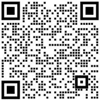Post Date: 2015-03-24

Photo: University of Illinois College of Engineering Pulsed Power: Piezo harvester shown attached to the surface of a bovine heart. The compliant design can collect enough energy for the pacemaker.
We are entering an era where removing a small amount of power from the environment can power small devices to accomplish special tasks. The need for the Internet of Things and the advent of low-cost components are shifting energy harvesting systems from niche applications to a wide range of practicalities.
This is clear information from a conference sponsored by market research firm IDTechEx last November in Santa Clara, California. In addition to energy harvesting and storage, topics covered include printed electronics, wearable technology, 3D printing, supercapacitors, the Internet of Things, and graphene. These seemingly different fields are closely linked. For example, as IDTechEx CEO Raghu Das points out, wearables are a powerful driver of energy harvesting technology. Other connections were also evident throughout the conference and in the showroom: Supercapacitors have the potential to create efficient ways to store and release the collected energy, and 3D printing plays an important role in creating prototypes and short-term custom production projects.
According to analysts from IDTechEx, the energy harvesting industry will grow to $ 2.6 billion by 2024. The harvest exhibition is structured around three main sources of energy and the technologies that use them: mechanical energy, thermal energy, and electromagnetic radiation. : South-East Railway uses movement: The device installed on the train uses the vibration of the landing gear to cause the magnet to vibrate in the coil to generate electricity for the sensor.
One method of harvesting mechanical energy discussed is a module created by Perpetuum in the UK. Its modules collect energy from the vibrations of railway wheels: the vibrations vibrate magnets in the fixed coils and power sensors that monitor the temperature of the wheel bearings. England-based Southeast Rail has installed Perpetuum's system on all of its 148 Electrostar trains. Identify and solve small problems before they become big problems.
The energy generated by exercise can be obtained in other ways. Many materials have piezoelectric properties: when a force is applied, the material generates an electrical current (and vice versa). And new piezoelectric materials are always being created. For example, a graduate student at the University of Illinois has created a thin, biocompatible piezoelectric film that can be safely implanted into living tissue. A multi-layered device containing a thin film mounted directly on the surface of a human heart can power a pacemaker. When the battery is low, this eliminates the risk of patients who have a standard pacemaker replaced by surgery every 5 to 10 years. Piezo is also used for large-scale applications. Part of the sidewalk lighting at the underground station during the 2012 London Summer Olympics was powered by the footsteps of passengers across energy-harvesting bricks. IDTechEx estimates that the global piezoelectric market in 2014 was approximately $ 35 million, almost double the market size in 2013.
IDTechEx analysts are also optimistic about the market size of thermoelectric systems that can convert excess thermal energy into electrical energy. Although thermoelectric systems have been around for decades, new solid-state thermoelectric devices can work with smaller temperature differences, increasing the number of places that can be used. At the show, analysts predict that the thermal power generation market will more than double from 2014 to 2016, reaching nearly $ 95 million.
Automotive applications are an obvious goal, but industrial applications are more likely to drive growth in this area. In manufacturing environments, wireless sensors powered by excess heat can eliminate power and communication lines at each location, reducing installation and maintenance costs.
Perhaps the most amazing way to harvest energy is to use the surrounding electromagnetic radiation. This is not a new idea: Crystal radios were once popular, and RFID tags and photovoltaic cells are now popular. However, the concept can be taken a step further. May draw energy from the various RFs that have plagued us. The Spanish Textile Research Association (Aitex) collaborated with other researchers to create a cloth that contains tiny antennas that are woven directly into the fabric. This technology can be developed so that our clothes can capture enough energy to power biometric sensors and other wearables.
The IDTechEx conference is a good example of how the whole is larger than the sum of its parts. The energy and enthusiasm among the participants has been missing from many technical events in recent years. The rapid growth of various markets has stimulated excitement, reminiscent of the early days of the prosperity of the personal computer, when everything was possible and amazing products were within reach. Energy harvesting will play an important role in changing the way we interact with everyday objects, our data, each other and even our own bodies.
The article originally appeared in the form of "harvest energy harvest".
 0
0












 Login/Register
Login/Register
 BOM
BOM
 Cart
Cart

